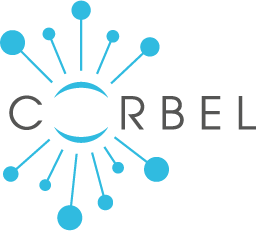Super resolution microscopy
Ground state depletion microscopy (GSD)
Description
Ground state depletion microscopy followed by individual molecule return (GSDIM or GSD for short) is a super-resolution technique based on single molecule localization. To precisely localize single molecules and create a high-resolution image the ensemble of overlapping fluorophores are temporally "separated". This can be achieved by using high power lasers to transfer fluorophores into long-lived "off states" – a non-fluorescent molecule state. Single fluorophores return stochastically from the off state and emit bursts of photons, which are recorded. The position of the fluorophore is determined using a software algorithm. Based on this list of coordinates a super-resolution image is reconstructed.
Service provider I
Advanced Light Microscopy Facility (ALMF), EMBL
Location
Heidelberg, Germany
Contacts
Scientific contact: Rainer Pepperkok
Technical contact: Stefan Terjung
Service provider II
The Institute of Photonic Sciences (ICFO)
Location
Barcelona, Spain
Contacts
Scientific Contact: Pablo Loza-Alvarez
Technical Contact: Jordi Andilla, Maria Marsal
Photo activated localization microscopy (PALM)
Description
Photo activated localization microscopy (PALM) is a widefield fluorescence microscopy imaging methods that allow obtaining images with a resolution beyond the diffraction limit. PALM is based on collecting a large number of images each containing just a few active isolated fluorophores. The imaging sequence allows for the many emission cycles necessary to stochastically activate each fluorophore from a non-emissive state to a bright state, and back to a bleached state. During each cycle, the density of activated molecules is kept low enough that the molecular images of individual fluorophores do not typically overlap.
Service provider
The Institute of Photonic Sciences (ICFO)
Location
Barcelona, Spain
Contacts
Scientific Contact: Pablo Loza-Alvarez
Technical Contact: Jordi Andilla, Maria Marsal
Reversible saturable optical fluorescence transitions
(RESOLFT)
Description
Reversible saturable optical fluorescence transitions (RESOLFT) denotes a group of optical microscopy techniques with very high resolution. Using standard far field visible light optics a resolution far below the diffraction limit down to molecular scales can be obtained. STORM is based on collecting a large number of images each containing just a few active isolated fluorophores. Reversible switching between a fluorescent on-state and a dark off-state of a dye is exploited to acquire an imaging sequence where the position of a fluorophore is calculated with a precision typically greater than the diffraction limit. During each cycle, the density of activated molecules is kept low enough that the molecular images of individual fluorophores do not typically overlap.
Service provider
Advanced Light Microscopy Facility (ALMF), EMBL
Location
Heidelberg, Germany
Contacts
Scientific contact: Rainer Pepperkok
Technical contact: Stefan Terjung
Stimulated emission depletion microscopy (STED)
Description
Stimulated emission depletion microscopy (STED) is one of the techniques that make up super-resolution microscopy. It creates super-resolution images by the selective deactivation/depletion of fluorophores in the peripheral area, minimizing the area of illumination at the focal point, and thus enhancing the achievable resolution for a given system.
Service provider I
Advanced Light Microscopy Facility (ALMF), EMBL
Location
Heidelberg, Germany
Contacts
Scientific contact: Rainer Pepperkok
Technical contact: Stefan Terjung
Service provider II
The Institute of Photonic Sciences (ICFO)
Location
Barcelona, Spain
Contacts
Scientific Contact: Pablo Loza-Alvarez
Technical Contact: Jordi Andilla, Maria Marsal
Stochastic optical reconstruction microscopy (STORM)
Description
The fundamental principle behind stochastic optical reconstruction microscopy (STORM) is that the activated state of a photo-switchable molecule must lead to the consecutive emission of sufficient photons to enable precise localization before it enters a dark state or becomes deactivated by photobleaching. Additionally, the sparsely activated fluorescent molecules must be separated by a distance that exceeds the Abbe diffraction limit (in effect, greater than approximately 250 nm) to enable the parallel recording of many individual emitters, each having a distinct set of coordinates in the lateral image plane.
Service provider I
Advanced Light Microscopy Facility (ALMF), EMBL
Location
Heidelberg, Germany
Contacts
Scientific contact: Rainer Pepperkok
Technical contact: Stefan Terjung
Service provider II
The Institute of Photonic Sciences (ICFO)
Location
Barcelona, Spain
Contacts
Scientific Contact: Pablo Loza-Alvarez
Technical Contact: Jordi Andilla, Maria Marsal
 shared services for life-science
shared services for life-science